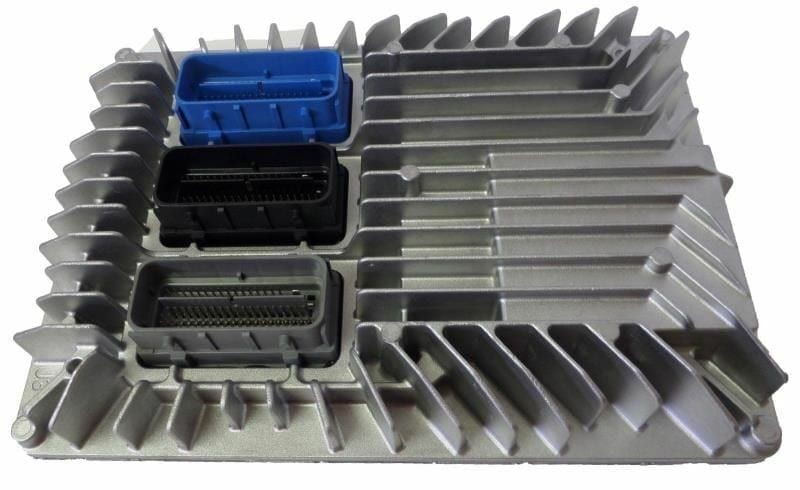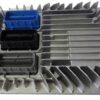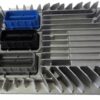Restore Your Cadillac’s Brain and End Frustrating Engine Problems
As a technician with over two decades of experience, I’ve seen firsthand how a failing Engine Control Module (ECM) can turn a sophisticated vehicle like your 2010-2012 Cadillac CTS into a source of constant headaches. Are you dealing with a persistent Check Engine Light, unexplained stalling, rough idling, or erratic transmission shifts? These aren’t just annoyances; they’re classic signs that your vehicle’s central computer is struggling. The ECM is the brain of your engine, managing everything from fuel mixture and ignition timing to emissions and transmission function. When it fails, the entire system suffers.
This isn’t just a replacement part; it’s a complete, ready-to-install solution. We take the guesswork and high dealership costs out of the equation. By providing us with your vehicle’s VIN at checkout, you will receive a fully programmed 2010-2012 CTS Engine Control Module loaded with the latest official GM software specific to your car. This eliminates the need for expensive programming tools or a costly trip to the service center. It’s the most direct and reliable way to get your Cadillac performing as it should.
A Technician’s Notebook: The Intermittent No-Start Nightmare
I remember a 2011 CTS that came into the bay with a truly frustrating issue. The owner said it would randomly refuse to start, but only after it was warm. There were no consistent trouble codes, just a U0100 (Lost Communication with ECM) that would pop up occasionally. We checked the battery, starter, and wiring harnesses—all were fine. On a hunch, I monitored the ECM’s data stream during a hot soak. Sure enough, as the engine bay temperature climbed, the ECM’s processor would begin to drop communication. Heat-related failure inside the module was the culprit. We replaced it with a VIN-programmed unit just like this one. The customer was back on the road the same day, problem solved, having avoided a multi-day diagnostic ordeal and the high cost of a dealership-sourced and programmed module.
Is Your Cadillac Showing These Signs?
A failing ECM can manifest in various ways. If you’re experiencing any of the following, a faulty module is a likely cause:
- ✔ Unexplained Check Engine Light illumination
- ✔ Stalling or cutting out while driving
- ✔ Engine cranks but refuses to start
- ✔ Noticeable decrease in fuel economy
- ✔ Harsh or erratic automatic transmission shifting
- ✔ Communication-related Diagnostic Trouble Codes (DTCs) such as P0601, P0606, or U0100
- ✔ Poor engine performance and hesitation
DIY-Friendly Installation Guide
Installing your new 2010-2012 CTS Engine Control Module is a straightforward process that most DIY enthusiasts can handle. Since the module comes pre-programmed, no special tools are required.
- Safety First: Always disconnect the negative terminal from your vehicle’s battery and wait a few minutes to ensure the system is fully discharged.
- Locate the ECM: On the 2010-2012 Cadillac CTS, the ECM is typically located in the engine compartment on the right-hand (passenger) side.
- Disconnect the Module: Carefully release the locking tabs on the electrical connectors and pull them straight out. Avoid wiggling them side-to-side to prevent pin damage.
- Remove the Old ECM: Unbolt the mounting hardware that secures the old module to its bracket. Keep the hardware, as you will need it for the new unit.
- Install the New ECM: Mount your new, pre-programmed module in place using the original hardware. Ensure it is secure.
- Reconnect and Secure: Plug the electrical connectors firmly into the new ECM. You should hear or feel a click as they lock into place.
- Final Step: Reconnect the negative battery terminal. Your vehicle may need to complete a security relearn procedure, which can often be done by cycling the key or following instructions in your owner’s manual.
Verified Vehicle Compatibility
This Engine Control Module is a direct-fit replacement for several GM vehicles and part numbers. Please verify your vehicle and original part number from the list below to ensure proper fitment. This module is a confirmed replacement for part numbers: 12616889, 12630908, 12637106, 12642665, 12650256, and 12651993.
- Cadillac CTS (2010-2012): 3.0L & 3.6L Engines
- Cadillac SRX (2010-2011): 3.0L Engine
- Buick Allure / LaCrosse (2010-2011): 2.4L & 3.0L Engines
- Buick Regal (2011)
- Chevrolet Camaro (2012): 3.6L Engine
- Chevrolet Captiva Sport (2012)
- Chevrolet Equinox (2010-2011)
- Chevrolet Impala (2012)
- Chevrolet Orlando (2012-2013)
- GMC Terrain (2010-2011)
- Saab 9-5 (2010-2011): 2.0L Engine
Note: This is not an exhaustive list. Location and specific engine options may vary. Always match your part number for guaranteed compatibility.
Frequently Asked Questions
Why do I need to provide my VIN?
Your VIN (Vehicle Identification Number) is essential for us to program the module with the correct, factory-specified software for your exact vehicle. This ensures perfect compatibility with your engine, transmission, and options, making the installation seamless.
Is this a plug-and-play part?
Yes! Because we program it to your VIN before shipping, it arrives ready to install. In most cases, no further programming is needed. Some vehicles may require a simple security or crankshaft position sensor relearn procedure, which can often be done without special tools.
Will this fix my Check Engine Light?
If the Check Engine Light is caused by an internal failure of the ECM (common codes include P0601, P0606), then this replacement module will solve the problem. It’s crucial to ensure the root cause of the light is the ECM and not a different sensor or wiring issue.
Do I need to send my old ECM back?
No core charge or return is required for this part. You can keep or responsibly dispose of your old module.
How is this different from a used part from a junkyard?
A used module from another vehicle will not work correctly because it’s programmed for that car’s specific VIN and options. Our module is professionally tested and programmed specifically for YOUR vehicle with the latest GM software, ensuring it functions correctly right out of the box.


